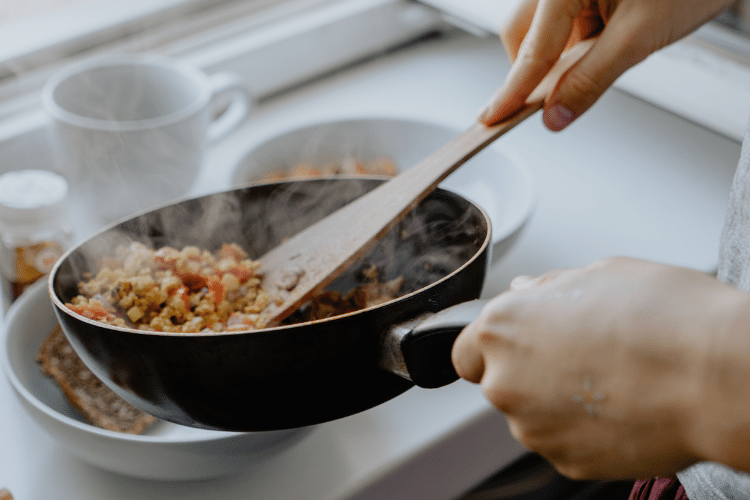Before you read on…heads up! I’m NOT a doctor or a nutritionist. I’m not giving you any medical or dietary advice here, just sharing what I like to eat. Check with your doctor before you make any changes to your diet!
Are you exhausted from searching for recipes that “work” for hemochromatosis?
I’m with you.
The factors that escalate iron absorption in the body seem countless and overwhelming.
Iron absorption is such a confusing and complex process involving hormones, enzymes, chemical reactions, and genetics that trying to understand it can feel like a burden.
In your attempt to lower your iron levels, you may be scanning food labels and googling ingredients online.
It’s easy to start thinking you should “avoid” pretty much everything, leaving you wondering how on earth you’re going to keep this up for years to come.
Thankfully, there are solutions – simple tricks help to minimize your intake of iron so you can feel better, faster. They don’t require tons of prep work or hours spent researching ingredients on the internet.
Here are nine straightforward, easy-to-understand mealtime tips for anyone with iron overload. While these tips are NOT a substitute for phlebotomies, they can help you call the shots on your dietary iron intake.
Embrace these 9 tips starting today!
1. eat more plants, eat less meat
If you don’t follow this rule, then the rest of the tips on this list won’t be as helpful to you.
Why?
You can easily affect how much iron you’ll absorb from plants.
Unlike meat, plants don’t contain any heme iron; they’re made only of non-heme iron, which is much easier to block using the right substances and ingredients.
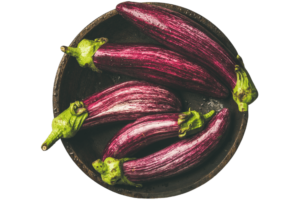
While it’s true that certain nutrients in plants enhance iron absorption (like vitamin C), it’s also true that you can fight their enhancing effect (I’ll explain how in tips #2-#9). When you stick to plants, YOU’RE in charge of how much iron you take in!
You CANNOT easily affect how much iron you’ll absorb from meat. It’s more difficult to control your iron uptake from meat. Meat is made up of about half heme iron and half non-heme iron. A person with hemochromatosis absorbs 80-100% of the heme iron from any type of meat (including fish). How come? Because the body’s mechanisms for absorbing heme iron are different than for non-heme iron. The way we absorb heme iron is not something we can manipulate. Red meat and shellfish have especially high iron levels, so at the very least work on cutting down on (or cutting out!) things like beef, lamb, oysters, and clams.
Meat also increases your iron intake from the foods you eat alongside it. This is called the “animal protein factor” and it’s a well-known phenomenon – also referred to as the “meat, fish, poultry factor,” or MFP factor.
Here’s how the MFP factor works:
Let’s say you eat a dish containing rice, veggies, and some form of animal protein (meat, fish, or poultry). The animal protein enhances your iron absorption from both the rice and veggies. You’ll get more iron from these foods than you would have had you eaten them with a plant-based protein. Animal protein triggers your gut to absorb more iron from ALL foods in your meal, not just the meat.
That’s why all of the tips below (#2 through #9) are more effective at reducing iron absorption from plant-based foods.
2. coffee with breakfast
Whether you brew it yourself, stop by your favorite coffee shop, or simply use a packet of instant coffee powder – pairing coffee with your breakfast will lower your iron absorption from your first meal of the day, setting you off to a great start!
One cup of coffee can block iron absorption from a meal by up to 60%, according to the Iron Disorders Institute. Coffee is a “potent inhibitor” of non-heme iron absorption because of a unique chemical compound called chlorogenic acid.
Don’t have time to make coffee? Even instant coffee has plenty of chlorogenic acid.
Don’t want the caffeine? Decaf coffee also retains its chlorogenic acid.
Coffee can work for everyone!
Consequently, coffee as an integral piece of the hemochromatosis diet is endorsed by The Iron Disorders Institute and Haemochromatosis UK as well as many medical clinics like Alberta Health Services.
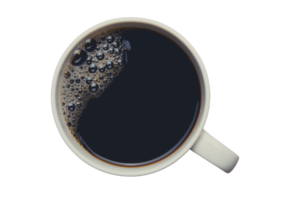
Drink your coffee black. If you add milk, the proteins in the milk bind to the chlorogenic acid and diminish coffee’s iron-blocking effects. The occasional latte is fine – if you’re going to add milk, I recommend oat or soy milk. Oat is higher in fiber and soy doesn’t ruin the effects of chlorogenic acid as much as cow’s milk so you still get some iron-blocking advantages from both of these milks. But if you’re aiming for maximum iron reduction, go for plain black coffee more often than not.
Worried that coffee isn’t “good” for you? For a few years, coffee was thought to possibly be a carcinogen, and you may still have that idea lurking in the back of your mind. Fortunately, research over the past decade has set the coffee confusion straight by better controlling studies for other lifestyle factors (the old research didn’t account for other cancer-causing factors like smoking or drinking). What have researchers found? That coffee actually does you a lot of good, just as long as you don’t drink it excessively. In a giant 2017 review looking at 200+ analyses of the effects of coffee on health, researchers came to the conclusion that moderate coffee drinkers have less heart disease, less premature death, and less cancer, amongst other healthier attributes. Aim for no more than 3 small cups per day.
3. black or green tea with lunch
Black and green tea have many proven health benefits – if you have hemochromatosis, you’ll want to use these to your advantage! Hemochromatosis organizations and doctors often recommend that their patients drink more tea, as you’ll find in the diet recommendations from The Haemochromatosis Society and The Iron Disorders Institute.
Black tea is abundant in polyphenols, the powerful plant chemicals that everyone with hemochromatosis should learn to love. Polyphenols fight free radical damage, repair inflamed tissues, and lower iron absorption.
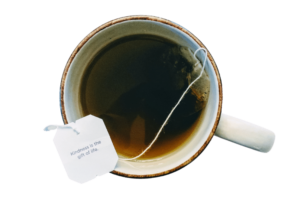
One study concluded that the polyphenols in black tea block iron absorption from a plant-based meal by 79-94%.
While green tea is not known for blocking iron like black tea, it’s got so many health benefits that it’s considered one of the most important components of a hemochromatosis diet. Combatting oxidation and damage to your cells and tissues, improving your mood, and boosting your brain health are just a few of green tea’s health benefits. (Learn more about the benefits of green tea for hemochromatosis here).
Similar to coffee, it’s best to drink tea plain – no milk or sugar. Of course, it’s okay from time to time – just not every day!
4. red wine or red grape juice with dinner
Pour yourself a glass of red (wine or juice) with dinner and enjoy!
Both red wine and red grape juice each block iron (by a small amount) and have been recommended by doctors as dietary tools for people with iron overload.
And yes – many of the health claims about “a glass of red wine a day” have evidence backing them up, especially when it comes to matters of the heart. Red wine has long been touted as heart healthy due to its mighty antioxidant powers, and red grape juice contains many of the same antioxidants that you’d find in a glass of vino.
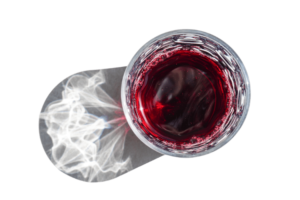
But these health benefits exist ONLY when you consume these tasty bevvies in moderation.
Just one glass!
Don’t overdo it – drinking too much will dump excess alcohol and sugar on your system, and the cons will far outweigh the pros. (To learn more about the effects of excess alcohol and sugar on people hemochromatosis, read this).
5. cook with hemochromatosis-friendly herbs and spices
It’s time to spice up your cooking! When you add the spices listed below to your meals, they’ll hinder your gut’s ability to digest the iron in your food. Start incorporating these spices into your recipes to keep your iron absorption to a minimum:
- Rosemary. Here’s the proof it blocks iron.
- Oregano. Here’s the proof it blocks iron.
- Cloves. Here’s the proof it blocks iron.
- Dried chili powder. Here’s the proof it blocks iron.
- Dried garlic powder. Here’s the proof it blocks iron.
- Dried peppermint. Here’s the proof it blocks iron.
- Dried ground ginger. While ginger does not inhibit iron absorption from your meals, here’s why you should cook with it: Dried, ground ginger has a high concentration of a compound called shogaol. Preliminary studies show that shogaol may help to lower iron stores by decreasing serum ferritin levels.
- Turmeric. While turmeric does not hinder iron absorption, it’s an iron-chelator, meaning it pulls iron out of your cells so your body can dispose of it, lowering your overall iron storage levels.
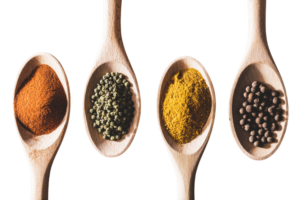
These spices not only have iron-fighting abilities, but they can do some pretty incredible things for your overall health and well-being!
For example…
Rosemary enhances memory.
Oregano is anti-viral.
Cloves have been called “the best antioxidant spice” by researchers.
Chili consumption is inversely associated with chronic kidney disease.
Garlic lowers blood pressure.
Mint alleviates gastrointestinal issues.
The shogaol in ginger lowers oxidative stress and relieves joint and muscle pain.
Turmeric improves brain function.
Even just a pinch of herbs and spices can go a long way towards adding powerful antioxidants to your meal.
Get cookin’!
6. sneak milk thistle into your recipes
Unlike the commonplace spices listed above in #5, milk thistle isn’t something you’d typically find at a grocery store because it’s not considered to be an “everyday cooking” herb.
It’s time to change that!
Milk thistle has been studied specially as a treatment for iron overload – and it’s effective!
Not only does milk thistle inhibit iron absorption from your food, it lowers your overall iron levels by reducing the amount of iron your cells keep in “storage.” Milk thistle’s anti-inflammatory, anti-aging, and liver-protective qualities really are something to write home about.
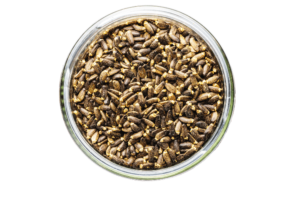
Milk thistle seeds are high in “silymarin” – the compound that’s beneficial for people with hemochromatosis. Due to their mild, slightly nutty flavor, ground milk thistle seeds are surprisingly easy to slip into your recipes.
Here are some effortless ways to sneak a little milk thistle into your life – you won’t even know it’s there!
- Use it as a salad garnish
- Blend it in with smoothies
- Sprinkle it on pasta
- Throw a big dash into your marinades
Try my favorite, Erbology Milk Thistle, and learn more about why you should be eating milk thistle here!
7. fiber with every meal
97% of American’s don’t eat enough fiber, with the majority of us only getting around half of what we’re supposed to. So how do we get more fiber? The answer’s easy…eat more plants!
All fiber comes from plants. Fiber is either “soluble” or “insoluble.” Fruits, veggies, whole grains, and beans contain significant amounts of both soluble and insoluble fiber.
Soluble fiber dissolves in water – as it mixes with fluids inside the body it forms a gel that aids your digestion and promotes insulin sensitivity, helping your cells get the energy they need.
Insoluble fiber does not dissolve in water and functions as an internal broom that gently sweeps waste out of your intestines, essentially scrubbing out your GI tract so you can eliminate toxins better.
Fiber also plays a vital part of the hemochromatosis diet because of its diminishing effect on iron absorption. That’s very good news! While the extent to which fiber blocks iron varies based on the person, gender, age, and other factors – studies show that fiber lowers your iron absorption from food by at least a small amount; it works best at inhibiting non-heme iron from plant-based foods.
In fact, one specific type of soluble fiber called pectin has been put forward by researchers as…
“useful in the management of hemochromatosis patients.”
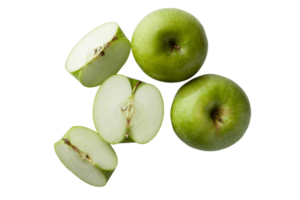
That’s why the Iron Disorders Institute recommends eating foods high in fiber if you have hemochromatosis. Some of my favorite high-fiber foods are black beans, green peas, white hominy, oats, popcorn, spinach, eggplant, celery, apples, pears, and bananas. Apples and pears (with the skins on) are great sources of pectin, so are unripe bananas.
8. get creative with sweeteners
Hemochromatosis organizations like The Iron Disorders Institute and The Haemochromatosis Society, as well as medical institutions like The University of Virginia strongly advise their hemochromatosis patients against consuming sugar and sugary foods.
Nix all soda and store-bought sweets like candy and cookies because they contain high amounts of fructose – most commonly in the form of white sugar or high-fructose corn syrup.
Since fructose is linked to higher iron stores, it’s best to go for low-fructose (and low-iron) alternatives when possible.
Whether you need a sugar substitute for your favorite baking mix or you’re looking for some added sweetness to things like oatmeal, coffee, and tea, try an alternative sweetener instead of reaching for the sugar.
Here are some hemochromatosis-friendly sugar alternatives:
- Stevia
- Monk fruit extract
- Yacon
- Brown rice syrup
- Maple syrup
- Coconut sugar
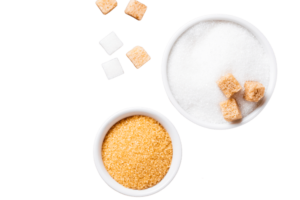
To learn more about why these are the best sweeteners for hemochromatosis, and which sweeteners you should avoid, read this.
9. turmeric and magnesium at bedtime
Turmeric is a root that looks similar to ginger when fresh, but it’s more popularly sold dried as a fine orange powder. It’s especially prevalent in Indian cuisine, where it’s also served medicinal purposes for centuries.
Lately, turmeric has become “the belle of the ball” for health and wellness junkies due to its anti-inflammatory properties. It also has the potential to relieve stress and reduce the effects of anxiety and depression.
Turmeric has a special place in the world of hemochromatosis because of its ability to chelate iron.
Researchers say, “The ability of turmeric to absorb intestinal iron may lead to it being useful in states of iron overload, such as hemochromatosis…”
According to Dr. Eric Lewis, turmeric is the “BEST natural remedy shown by clinical research to reliably reduce the build-up of iron in the body.”
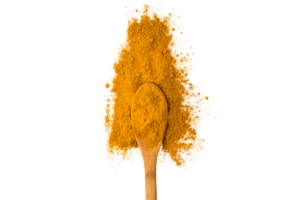
While you certainly can cook with turmeric to spice up your meals (see tip #5 above), nutritionists commonly advise taking it on an empty stomach to get maximum benefits. It fits well as part of a nightly routine – at least a few hours after you’ve eaten dinner.
Make sure you get a high quality turmeric supplement with a hefty dose of curcuminoids, the compounds that provide many of turmeric’s health benefits. I recommend Gaia Turmeric Supreme.
Turmeric pairs really well with magnesium in the evening – the combination of turmeric and magnesium has been deemed a “dynamic duo.” Registered dietitian Ashley Koff says that cooperatively turmeric and magnesium promote a healthy response to both stress and inflammation.
45% of Americans don’t get enough magnesium, a nutrient that’s involved in hundreds of biochemical reactions in the body! Magnesium is most known for helping with nerve function and maintaining a healthy brain, as well as invoking deeper and better sleep in people.
While magnesium itself doesn’t do anything to block iron, Dr. Eric Lewis recommends it for hemochromatosis because of the important role it plays in so many of the body’s daily functions.
Magnesium comes in several different forms. For bedtime use, I suggest magnesium glycinate – known for alleviating anxiety and promoting better sleep – such as Pure Encapsulations Magnesium Glycinate.
Slip this nightly supplement duo into your bedtime routine, and enjoy a deep rest as your body resets itself (and clears out some excess iron) for tomorrow.
P.S. this is the ONE THING you’re doing wrong
Drinking cow’s milk.
I’ve been on countless hemochromatosis forums, and drinking cow’s milk is possibly the #1 old wives’ tale that people fall for. At least a handful of people in every chat have posted, “I drink a glass of milk with every meal to block iron.”
Contrary to what many people still believe, drinking cow’s milk does not inhibit iron absorption in adults.
The reason milk was previously thought to inhibit iron absorption is because of its high calcium content. While some studies show that calcium can reduce iron absorption, other studies do not.
The new theory goes that calcium may initially block iron, but the body adapts so you quickly go back to absorbing as much iron as you normally would. And researchers now understand that supplementing the diet with calcium is “unlikely to have a biologically significant impact on Fe balance in Western societies…”
Most importantly, when MILK ITSELF was put to the test …
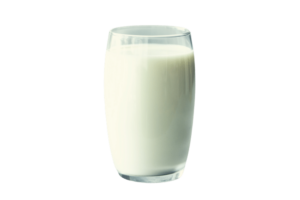

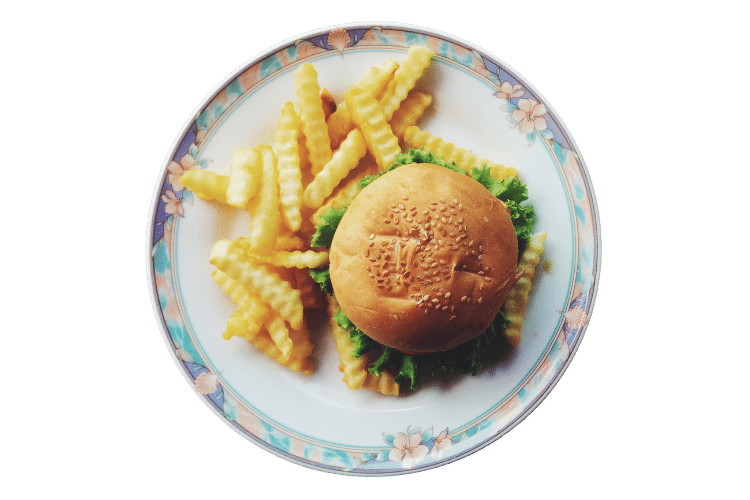


… it did not stop iron absorption from food at all.
In fact, instead of binding to iron and preventing that iron from entering your body like you’d want, milk proteins actually bind to polyphenols in your food – rendering those polyphenols useless. Studies on cocoa, blueberries, and coffee found that milk significantly reduced the polyphenolic and antioxidant activity of these foods.
All the hard work that goes into cooking a hemochromatosis-friendly meal goes out the window when polyphenols can’t do their job (a job that includes blocking iron absorption, fighting inflammation, and preventing damage to your liver, heart, and brain) because they’re locked up with milk proteins.
Aside from its disabling effect on health-promoting and iron-blocking polyphenols, here are some other reasons to consider avoiding cow’s milk:
- An eight-year long study published in 2020 revealed that women who drink one cup of dairy milk per day increase their risk of developing breast cancer by 50%, and two-three cups daily increases the risk of breast cancer by 70-80%.
- Another study found that dairy can increase men’s risk of prostate cancer by 30-50%.
- Canada decided to pull dairy milk entirely off the country’s food guide because of the research showing that milk does more harm than good.
Stop relying on cow’s milk and switch over to healthier options. Try experimenting with plant-based milks like oat, soy, and almond. And if you’re worried that you won’t get enough calcium, never fear, most plant-based milk have been fortified with calcium, containing just as much as you’d get from cow’s milk, glass for glass.
FINAL THOUGHTS
Try using these simple methods for keeping iron absorption low – they’re easy to employ and have the potential to help you feel better.
- eat more plants, eat less meat
- coffee with breakfast
- black or green tea with lunch
- red wine or red grape juice with dinner
- cook with hemochromatosis-friendly herbs and spices
- sneak milk thistle into your recipes
- fiber with every meal
- get creative with sweeteners
- turmeric and magnesium at bedtime
By putting these tips to use, you can incorporate a wide variety of foods into your diet without needing to worry as much about “how will this affect my iron levels?” These 9 tips provide health benefits and iron-blocking powers that are superior to drinking dairy milk, which is an outdated and misguided recommendation for hemochromatosis. I hope these tips help you as much as they’ve helped me. Let me know what you think!
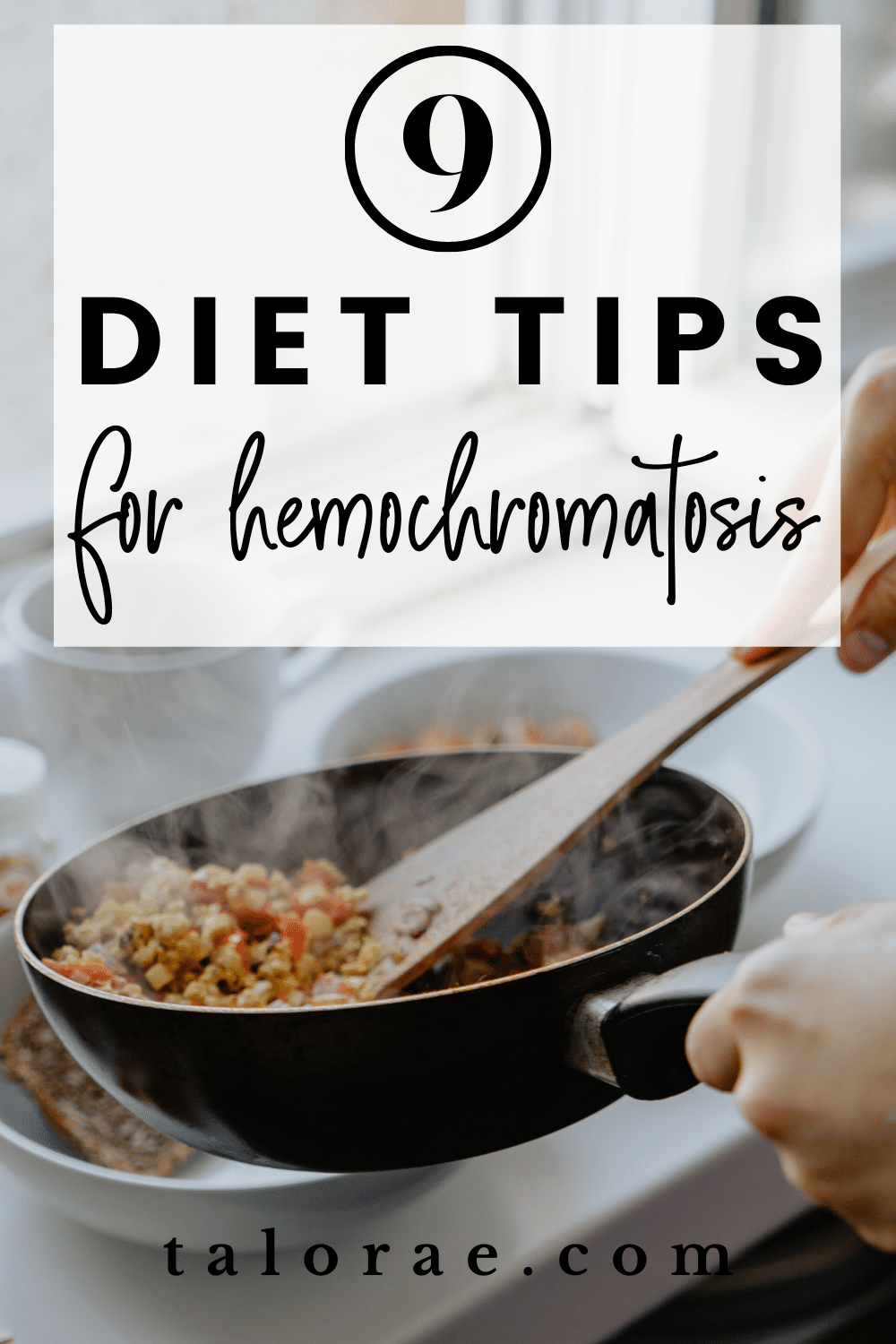
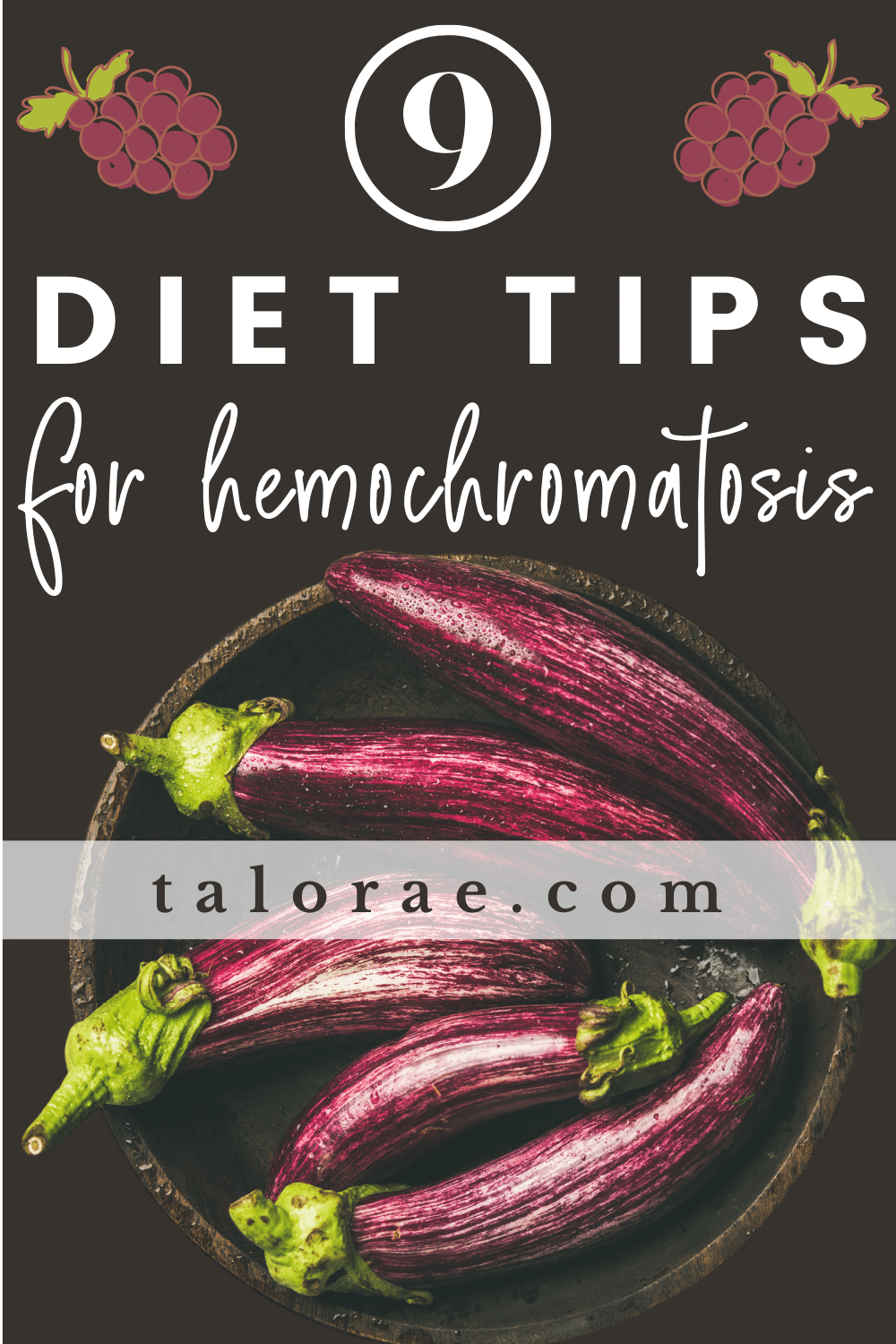
The views expressed in this post are for informational purposes only. This post is not, nor is it intended to be, a substitute for professional, medical, or nutritional advice, diagnosis, or treatment, and should never be relied upon for professional, medical or nutritional advice, diagnosis, or treatment.
No content on talorae.com, including but not limited to pictures, graphics, videos, and text, may be republished or distributed, for financial gain or not, without my written permission.
As an Amazon Associate I earn from qualifying purchases. The above content may contain affiliate links, meaning I do get a commission when you make a purchase through those links. There is no additional cost to you. Please read my disclaimer for more info.
